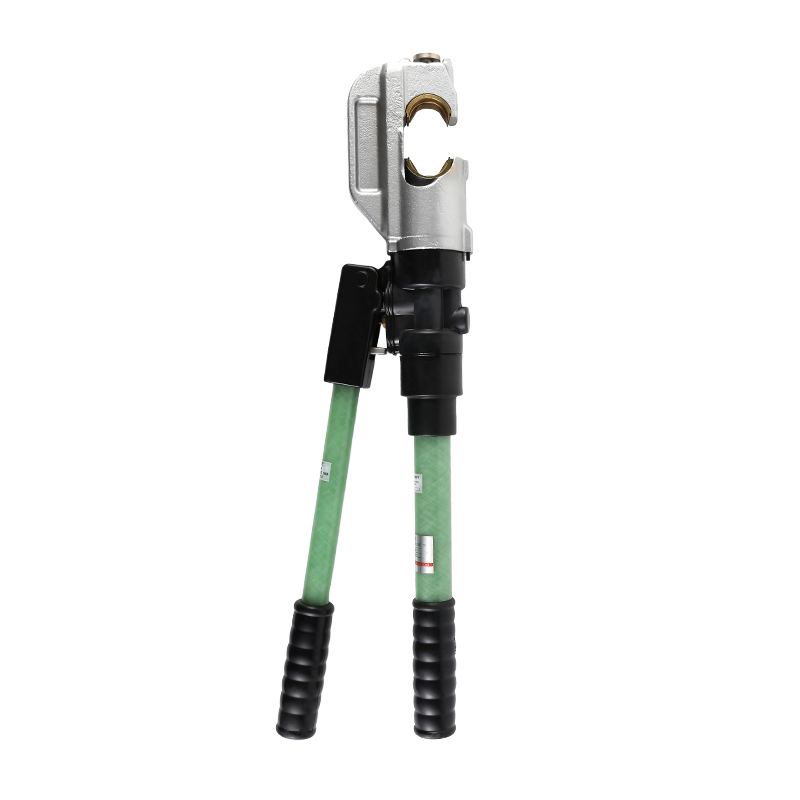 2025.07.18
2025.07.18
 Industry News
Industry News
In the realm of pipe crimping, the selection of an appropriate tool is pivotal for achieving efficiency, accuracy, and user-friendliness. Irrespective of whether you're operating in the plumbing, HVAC, or industrial fields, the decision between manual and battery pipe crimping tools is of utmany importance.
Manual pipe crimping tools are uncomplicated devices that depend on the user's physical strength to exert the required crimping force. They typically feature a lever or handle mechanism, which the user manually operates to achieve the crimp.
A key advantage of manual pipe crimping tools is their straightforward nature. There are no batteries to recharge, no complex settings to configure—just a straightforward tool ready for immediate use. This simplicity is particularly beneficial for users seeking a tool that is easy to operate and does not demand technical proficiency for maintenance. Additionally, manual tools are generally more cost-effective upfront compared to their battery-powered counterparts, making them an economical choice for smaller-scale projects or infrequent use.
Conversely, battery-powered pipe crimping tools, driven by rechargeable batteries, facilitate faster and more efficient crimping. These tools are especially advantageous for larger-scale projects that necessitate multiple crimps. A battery-powered pipe crimping tool can substantially decrease the time required to complete a job, rendering it an invaluable asset for high-volume tasks.
The primary benefit of a battery pipe crimping tool is its power and consistency. Unlike manual tools, which depend on human strength, battery-powered tools provide uniform pressure with every crimp. This consistency results in more reliable and professional results, which is particularly important in industries where precision and quality are paramount.
In addition to speed, a battery pipe crimping tool can also reduce physical strain. The tool does the heavy lifting for you, allowing you to work for longer periods without fatigue. This is particularly advantageous when working with tougher materials or large-diameter pipes that require significant crimping force.
However, battery pipe crimping tools come with some trade-offs. They are typically more expensive than manual tools, both in terms of the initial purchase price and the need for periodic battery replacements or recharging. Additionally, while these tools are efficient, they can be heavier than manual tools, which may pose challenges in tight or confined spaces.
The decision between a manual and a battery pipe crimping tool ultimately depends on the nature of your workload and your specific needs. Here are some key considerations to help guide your decision:
If you're working on small, occasional projects or need a tool for personal use, a manual pipe crimping tool is often more than sufficient. It's lightweight, easy to use, and inexpensive.
Manual tools may work fine for smaller pipes or less demanding materials. However, for larger pipes or tougher materials, a battery pipe crimping tool can provide the necessary power to ensure reliable and consistent crimps. The higher force output of a battery tool is particularly important when crimping materials like copper, aluminum, or stainless steel.
Manual pipe crimping tools are more affordable, making them a great option for those who need an occasional crimping tool for lighter jobs. However, if you're working on larger-scale commercial projects, investing in a battery pipe crimping tool might be a better long-term solution due to its efficiency and ease of use.
In the realm of pipe fitting and installation, the choice of tools can significantly impact both the efficiency of the work and the comfort of the worker. Battery-powered pipe crimping tools have emerged as a popular choice for professionals who value ergonomics and fatigue reduction, especially during extended work hours or when dealing with heavy-duty crimping tasks. These tools are designed with ergonomic handles that are crafted to alleviate strain and enhance user comfort, making them a compelling option for those who prioritize user experience.
While battery pipe crimping tools offer the simplicity of minimal maintenance—requiring only occasional lubrication and cleaning—battery-powered tools come with their own set of maintenance requirements. They demand periodic charging, battery replacements, and regular maintenance to ensure they continue to perform at their good. This added responsibility can be a deciding factor for some professionals who must weigh the benefits of convenience against the need for ongoing care.
To make an informed decision, it's crucial to consider your workload, the material specifications you'll be dealing with, and your budget constraints.
